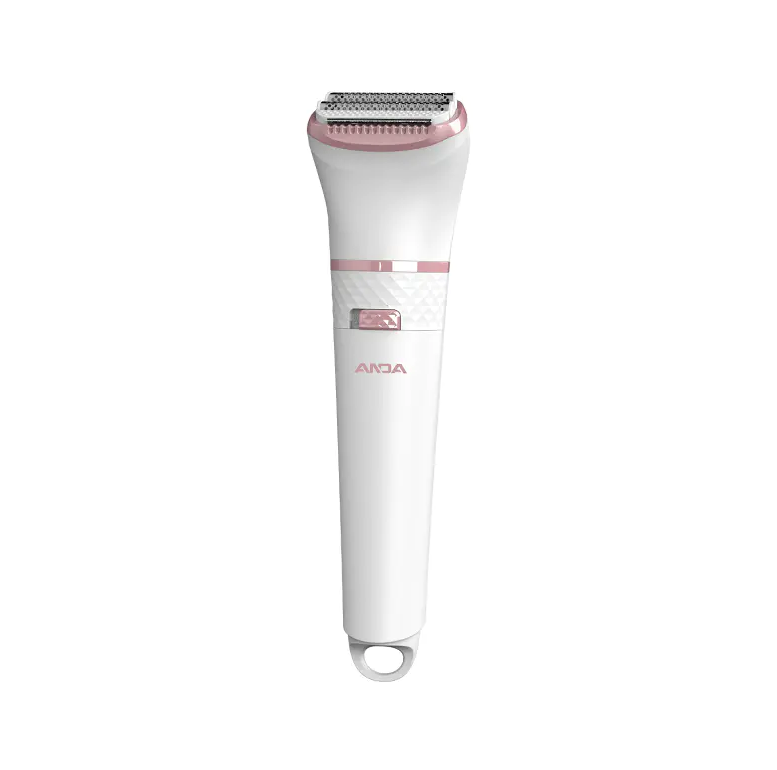The performance of a Women's Electric Epilator can vary significantly depending on whether it is used in dry conditions or in a wet environment such as a shower or bath. Although modern models are designed to operate in both modes, the user experience, efficiency, comfort level, and skin response can differ. Understanding these variations helps users choose the best method for their skin type and desired outcome.
The efficiency of Hair Removal Differs Between Dry and Wet Conditions
Dry epilation generally provides higher efficiency because the hairs stand firmer and more upright on dry skin, allowing the device to grip and extract them more easily. In contrast, when the skin is warm and wet, hair tends to soften and lie flatter against the skin. This softening reduces the device’s gripping precision, meaning that some hairs may require additional passes for complete removal. As a result, dry conditions often lead to faster sessions with fewer strokes, making the process more time-efficient for users accustomed to the procedure.
Comfort and Pain Level Change Noticeably in Wet Environments
Many users prefer wet epilation because warm water helps relax the skin and reduce discomfort. Moist heat opens pores slightly, reduces surface tension, and makes the skin more flexible, which can significantly ease the sensation of pulling. Beginners often find that wet conditions provide a gentler introduction, as the initial sensitivity is reduced. Dry epilation, while more efficient, may be slightly more intense, especially on sensitive areas. Therefore, individuals with low pain tolerance often opt for wet epilation even if it requires a few additional passes.
Skin Sensitivity and Irritation Vary According to the Environment
Skin response after epilation can differ depending on whether the procedure was done wet or dry. Dry epilation may lead to more noticeable redness immediately afterward, since the skin is not cushioned by moisture. Friction is also higher in dry conditions, which can contribute to temporary sensitivity. Wet epilation, aided by water or even a mild shower gel, reduces friction and can minimize irritation. The presence of moisture creates a protective buffer that results in a calmer post-treatment appearance for many users. However, this depends on individual skin types, as some may still experience sensitivity regardless of the environment.
Hygiene and Cleaning Efficiency Are Better in Wet Modes
Using an epilator in wet conditions often simplifies post-use cleaning. Water helps rinse away fine hairs and skin debris before they accumulate inside the head. This makes it easier to maintain the device, prolonging its lifespan and maintaining hygiene. Dry use, on the other hand, may require more deliberate cleaning with brushes or compressed air to remove trapped particles. Many users appreciate the convenience of a water-assisted rinse, especially for frequent epilation.
Grip, Stability, and Device Handling Change Between Modes
Another difference lies in how the device feels in the hand. During dry use, users typically have a stable grip with little risk of slipping. In wet use, however, soapy or moist hands might reduce friction, requiring a firmer hold or devices with enhanced anti-slip designs. Although many modern models include rubberized grips, users must still be mindful of stability, especially when using the device in a shower environment.
Long-Term Skin Effects Show Subtle Differences
Over time, dry and wet epilation may influence the skin differently. Repeated dry sessions might produce slightly more exfoliating effects because the skin is pulled and stretched more directly. This can be beneficial for some users, helping prevent ingrown hairs. Wet sessions, on the other hand, tend to be gentler and are preferred for those with very sensitive or reactive skin. Long-term comfort and performance often depend on a balance between both methods based on skin condition and personal tolerance.
The performance of a Women's Electric Epilator varies between dry and wet environments, with each mode offering distinct advantages. Dry use typically provides faster and more efficient hair removal, while wet use enhances comfort and reduces irritation. Factors such as pain sensitivity, skin type, desired speed, and convenience all influence which method is most suitable. Ultimately, both modes are effective, and many users switch between them depending on the area, conditions, and personal preference.
